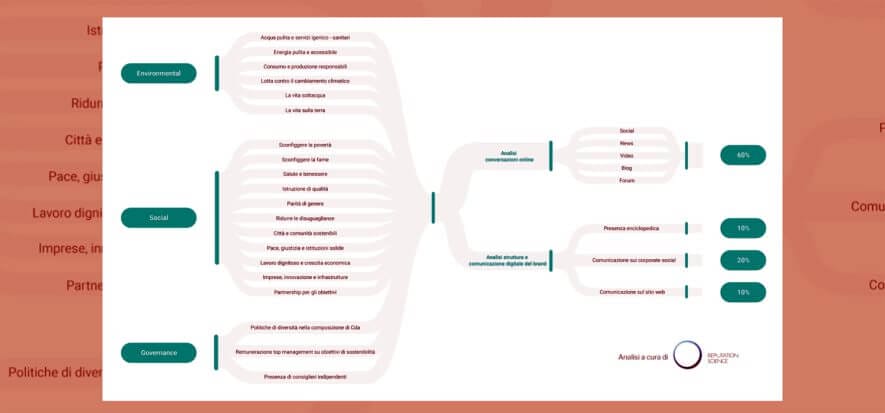“Measuring”, meaning the topic of our last monthly edition and the growing number of statements opinions and interviews being published. Looking through the newspapers, we saw an articled by MF Fashion titled: “Armani, Gucci and Cucinelli among the most environmentally conscious companies”. Summarized: “According to ESG, the fashion&beauty cluster has an average index of 26.9 in terms of perceived environmental impact”. Perceived?
The perceived luxury brands environmentalism
The tool used to create the ranking is called ESG Perception Index. The publisher is Reputation Science, a self-defined analytics and reputation management company. It represents, as it reads online, “the indicator that measures the perceived environmentalism of brands. The observatory analyzes the largest Italian companies (present on the stock exchange, and ranked by Mediobanca and Interbrand) to produce a ranking of the top 200 companies in terms of perceived sustainability”.
It’s about reputation. “The model analyzes the brands’ proximity to the 17 UN sustainability pillars and creates an indicator (from 0 to 100) on the basis of a quantitative and qualitative parameters”. Summarized: “Perception is the factor that today impacts stakeholders the most, and measuring is thus of paramount importance”.
The ranking
The last ranking highlights how only Armani and Gucci made it to the top-50 of the general rank, respectively ranking 36th and 50th. The “fashion & beauty” cluster scores an average of 26.95, up from the previous ranking of 2022. The brand perceived as the most environmentally conscious is Gucci, up 34 places and 7 points, while Armani comes in 2nd.
Gucci’s exploit is due, writes Fashion Magazine, “to the high number of conversations tied to ESG topics (19.8% of the total), with initiatives such as that of Harry Styles, who supports the Global Fund for Women, and the launch of the summer collection for pets”. Armani remains at the top “also thanks to the opening of the first mono-brand A|X Armani Exchange store that has an inclusive spirit”. Then are Cucinelli, Adidas (“which launched the Run for the Oceans event for those that want to clean up the environment”).
Measuring
The index built by Reputation Science, as seen in the photo (from its portal), is based on calculations, measurements that eventually provide perceived environmentalism levels. And maybe it’s for this very reason that more thought must be given to the topic. First of all because it’s a very “pop” idea of sustainability, very “newsworthy” and very wide. An idea that puts the focus (as written in the above paragraphs), on green factors tied to social and inclusiveness aspects.
It’s a fair approach in all honesty (given that even UNIC’s latest Sustainability Reports base their analysis on the UN’s 17 pillars). Yet, it tends to get away from the idea that sustainability should be tied to attentive evaluations of processes, products emissions, and other factors that industries, such as the tanning one, place their focus on. In what way, then, is the perceived sustainability aligned with the effective, concrete, and tangible measurements?
Read also:











